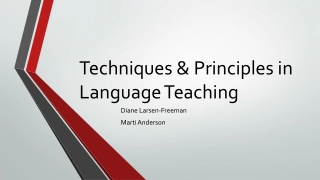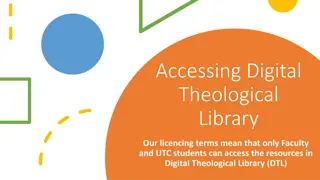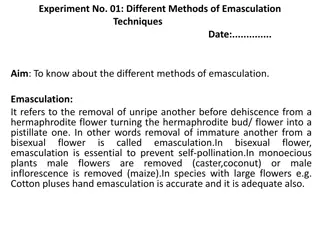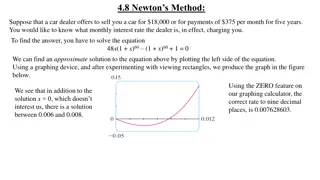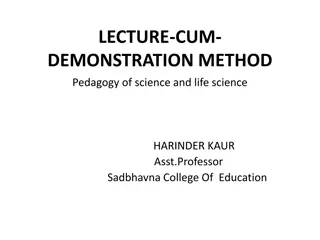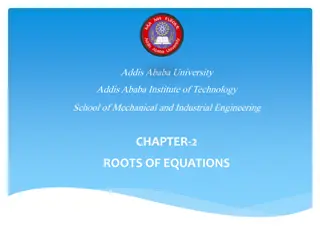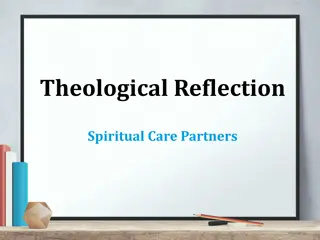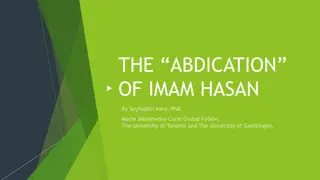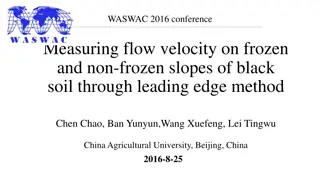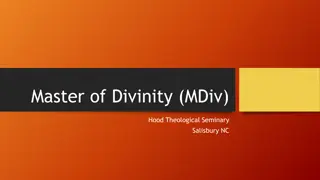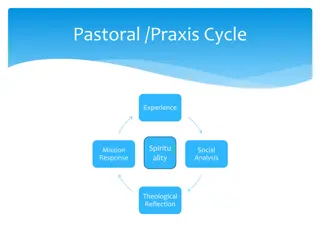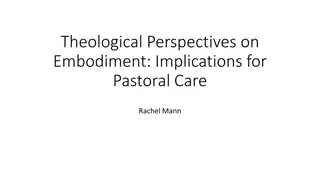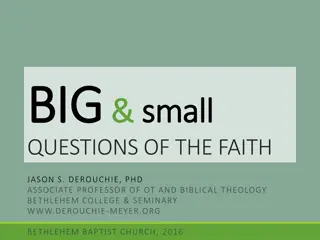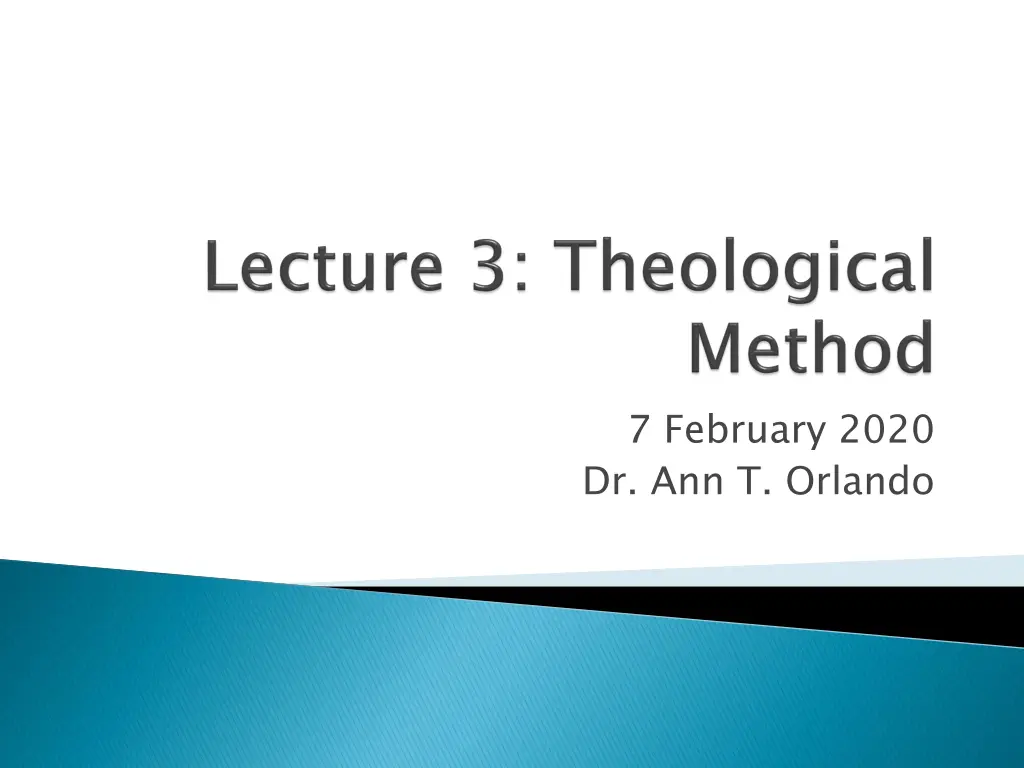
Approach to Theology and Biblical Exegesis by Augustine and His Legacy
Delve into Augustine's approach to theology and biblical exegesis, emphasizing the use of Scripture illuminated by God's grace. Explore how Augustine's writings, such as "On Christian Teaching," focus on the study of God through systematic methods and the interpretation of ambiguous passages. Discover the enduring influence of Augustine on subsequent theologians like Gregory the Great, Bonaventure, and Aquinas, who furthered his theories of knowledge and signs in Christian teachings.
Download Presentation

Please find below an Image/Link to download the presentation.
The content on the website is provided AS IS for your information and personal use only. It may not be sold, licensed, or shared on other websites without obtaining consent from the author. If you encounter any issues during the download, it is possible that the publisher has removed the file from their server.
You are allowed to download the files provided on this website for personal or commercial use, subject to the condition that they are used lawfully. All files are the property of their respective owners.
The content on the website is provided AS IS for your information and personal use only. It may not be sold, licensed, or shared on other websites without obtaining consent from the author.
E N D
Presentation Transcript
7 February 2020 Dr. Ann T. Orlando
Augustines Approach to Theology: Biblical Exegesis The Teacher De Doctrina Christiana: On Christian Teaching (On Christian Doctrine)
Theology: study of God Method: tools and approach to pursue that study Systematic theology: organization and pursuit of theology as one connected, coherent system
Entirely based on Scripture illuminated by God s grace Illumination both personal and ecclesial (Tradition) Biblical exegesis was the primary method for doing theology But exegetical approach could use a variety of secular tools Augustine wrote almost all of his works as a response to someone or some issue
Written shortly after Augustine and Adeodatus return to Africa Very shortly before Adeodatus death (389) We need to use signs to teach, to communicate; but this leads to a paradox: Language is a type of sign But you don t know what language (signs) mean unless you know the reality behind them Resolved by looking to the inner teacher, Christ, the Word Christ is the true basis of all knowledge And we come to know Christ through the words (signs) found in Scripture
Using On the Teacher, Gregory the Great in his homilies on the Gospels discusses language and signs, and the interior importance of true knowledge Bonaventure defends Augustine s theory of knowledge and signs in his On the Knowledge of Christ Aquinas in ST Ia Q117 discusses learning through signs, although with more concern for Aristotle than Augustine
Written 396 - 400; audience is primarily preachers, especially bishops Augustine tells us he divided the material into two parts: Rules for Interpreting Scripture (Part I: Books I-III) and Preaching Scripture (Part 2: Book IV) How to interpret and preach ambiguous and difficult Scripture passages
Given Augustines fame as an orator, other bishops in the region asked him for pointers to improve their homilies Recall that in the Confessions, Augustine does not have much good to say about his chosen profession Practitioners are filled with ambition Concerned to win debates in law courts, not find the truth Thus Augustine refuses to suggest rhetorical tricks for use in homilies Should be based on preaching the truth of Scripture (Books I-III) Only once the truth of Scripture is mastered, should the homilist consider the style of his sermon, and the style should always be in service of preaching the truth (Book IV)
Augustine addresses three possible critics: 1. Those who fail to understand the rules for interpreting Scripture 2. Those who understand the rules, but do not have the skill to use them 3. Those who think no rules or skills are needed, only direct illumination from God This is the group he is most concerned about
Begins with the distinction between things and signs Consider things (res) first Some are meant to be used, others enjoyed, still others both used and enjoyed Things which we enjoy makes us happy; things which we use are tools we use to reach what the things that make us happy Enjoyment consists to clinging to a thing lovingly for its own sake If we enjoy (love) things that are meant to be used, we deceive ourselves The thing to be enjoyed is the Trinity But there is no language (sign) to speak adequately about the Trinity Our minds must be purified to enjoy the truth of the unchanging, living God But we can only do this because Wisdom (the Word) herself became mortal Christ the physician purifies us Since we are made in God s image, are we to be used or enjoyed We are to love ourselves, not for our own sake, but as something to be used toward the love (enjoyment) of God To live a holy life, we must be able to evaluate things correctly, and so understand the right ordering of things to be loved We are to love everyone equally But we can not help (be used by) or be helped (use) all equally God uses us for our benefit When we enjoy a human being in God, we are really loving God Anyone who thinks they have understood Scripture but cannot by his understanding build up this double love of God and neighbor, has not yet succeeded in understanding it (I.xxxvi)
Theory of signs To properly read Scripture, must make spiritual ascent; seven stages of ascent based on gifts of Holy Spirit Importance of knowing history, geography, astronomy, mathematics and logic in studying Scripture (scientia) 3rdstage List of OT and NT canon of Scripture Use Scripture to interpret Scripture Problems of translating into Latin; preachers should know Greek and Hebrew The authority of the Septuagint is supreme (II.xv)
A thing (res) is an external reality Sign (signum) is something sensed which shows the mind something else Natural signs, e.g. smoke indicating fire Conventional or given (data) signs Words (verbum) are a type (but not the only type) of conventional or given signs
Human communication of reality (res) is by the given signs of words Inherent ambiguity of how to use words Denotation vs connotation Because it is a conventional sign (not a thing), language is not unique Multiple languages not only have different words but different structures Same sounding word can mean different things in different languages Or even in the same language
What is to be expressed is conceived in the heart, the inner man Only when it is to be communicated is the choice of specific language made Matching the differences in your audience you employ different languages in order to produce the word you have conceived; but what you have conceived in your heart was confined to no language. (Tractates on John 3.14.7) We learn language as a child by learning to associate words with thoughts, feelings and things But even before we can express ourselves, infants have thoughts and feelings (Conf. I)
In DDC he applies his theory of signs to Scripture (Book II) All language is a sign of some reality (res) Two types of given signs in language Signa propria: proper signs as ox Signa translata: metaphorical signs, as ox to mean a minister yoked to Gospel
The Word is the perfect eternal Truth (no ambiguity) Word became flesh to cure our corrupt souls Perfect Word becomes perfect man Mediator of grace to us This Word in a thing, the creator of all things; not a sign of something else
Fundamentally, we either use (uti) or enjoy (frui) things We use things in order to move toward enjoyment Ultimately, all created things and people are to be used in order to move toward the only real enjoyment: God There is a relation between sign/thing and use/enjoy: All creation is a sign of God, created by the Word All rational creatures find their ultimate enjoyment (fulfillment) in union with God
Christmas Day homily, likely before 400 Note elaborate rhetoric, especially at beginning Note interplay between preacher and congregation Language and what is in the mind
Probably written just after he completed Books I-III of DDC Note discussion of the real thing God is love a love beyond words Sin: we love what we should use Relation between faith and love
The Teacher, found in Augustines Earlier Writings (OPTIONAL) DDC Prolog, Books I and II Sermons 187 and 21 Prepare paper #3 (Group A)
Levering, Matthew. Theology of Augustine. Grand Rapids, MI: Baker, 2013. Anderson, Robert. Teaching Augustine s On the Teacher, Religions 2015, 6(2), 404-408. Toom, Tarmo. Augustine s Case for the Multiplicity of Meanings, Augustinian Studies 45:2 (2014) 183-201. Williams, Rowan. Language, Reality and Desire in Augustine s De Doctrina Literature and Theology Vol. 3, No. 2 July 1989.

